In hazardous work environments where flammable gases, vapors, or dust particles are present, safety is paramount. In these settings, any electrical or electronic equipment can pose a potential ignition source, potentially causing fires, explosions, and other catastrophic incidents. Intrinsically safe equipment is designed to minimize this risk by ensuring that the electrical energy within the device is limited to a level that is incapable of igniting flammable substances. This is achieved by using specialized components and circuitry that prevent electrical energy from building up to dangerous levels.
The use of intrinsically safe equipment is a crucial safety measure in industries such as oil and gas, mining, chemical processing, and other industries that deal with hazardous materials. These industries have strict safety regulations and standards that govern the use of equipment in hazardous areas. Intrinsically safe equipment must meet these standards to ensure that it is safe to use in explosive atmospheres. In addition, it is essential that intrinsically safe equipment is properly maintained, inspected, and tested to ensure that it remains safe for use [1].
This article will provide an in-depth understanding of intrinsically safe equipment, including its design principles, types of hazardous environments where it is used, and the regulations and standards governing its use. We will explore the various components that make up an intrinsically safe device, such as barriers, isolators, and sensors.
Additionally, we will discuss the benefits and limitations of using intrinsically safe equipment in hazardous environments. This article will be beneficial for professionals working in hazardous industries, safety managers, and anyone interested in understanding the importance of intrinsically safe equipment in ensuring workplace safety.
What Does Intrinsically Safe Mean?
Intrinsically safe refers to electrical or electronic equipment that is designed to operate in hazardous environments without causing ignition of flammable gases, vapors, or dust particles. This type of equipment is specifically designed to limit electrical energy to a level that is incapable of igniting a potentially explosive atmosphere.
Intrinsically safe equipment is typically used in industries such as oil and gas, mining, chemical processing, and other industries that deal with hazardous materials. These industries have strict safety regulations and standards that govern the use of equipment in hazardous areas [2].
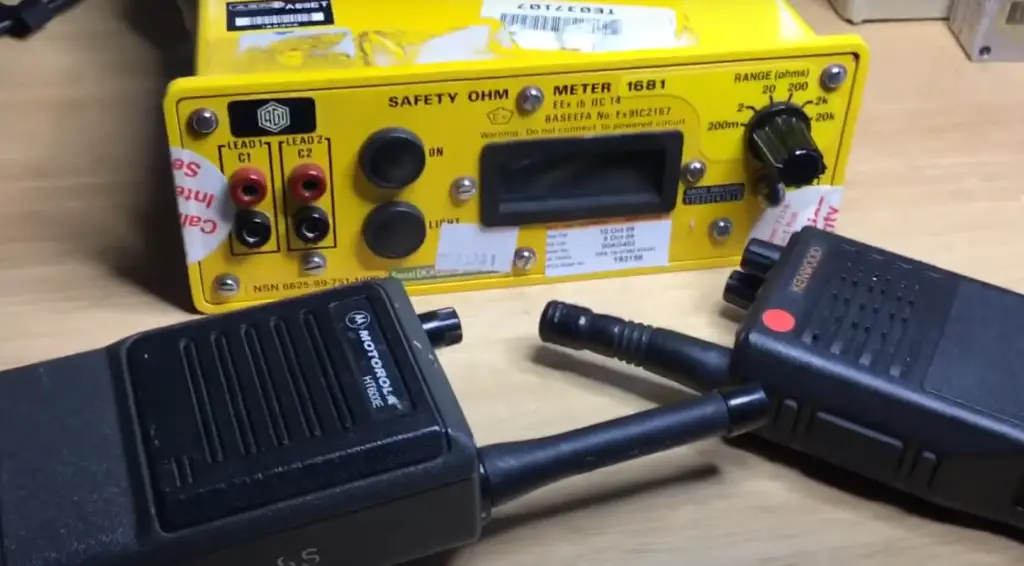
Using intrinsically safe equipment in these environments reduces the risk of fires, explosions, and other catastrophic incidents, which can result in loss of life, injury, and damage to equipment and infrastructure. The use of intrinsically safe equipment is a crucial safety measure to ensure workplace safety and prevent accidents in hazardous environments.
It is important to note that not all electrical equipment can be made intrinsically safe. Certain types of equipment, such as electric motors and lighting fixtures, cannot be designed to be intrinsically safe. In these cases, alternative methods of protection, such as explosion-proof enclosures or purging with inert gas, may be used to prevent the ignition of flammable materials.
Intrinsically Safe Classifications
Class and Groups
The class designation refers to the type of hazardous location, while the group designation refers to the type of flammable substance that is present or may be present. For example, class I refers to hazardous locations where flammable gases or vapors may be present, while class II refers to hazardous locations where combustible dust may be present.
Divisions
The division designation refers to the level of hazard present in the location. Division 1 locations are those where there is a high probability of flammable substances being present, while Division 2 locations are those where there is a lower probability of flammable substances being present. Equipment that is designed for use in Division 1 locations must be certified to be safe for use in those environments.
What Are the Benefits?
The benefits of using intrinsically safe equipment are numerous. One of the main benefits is increased safety. Intrinsically safe equipment is designed to be incapable of generating enough electrical energy to ignite flammable substances. This reduces the risk of explosions or fires in hazardous locations. Additionally, intrinsically safe equipment is designed to be rugged and durable, which makes it suitable for use in harsh and hazardous environments [3].
Which Electronics Apply?
Many different types of electronics can be designed and certified as intrinsically safe. Some examples include handheld devices, such as radios and mobile phones, as well as larger equipment, such as lighting systems and data acquisition systems. The specific requirements for certification will depend on the type of equipment being used and the hazardous location where it will be used.

What Is the Certification Process for Intrinsically Safe?
The certification process involves evaluating the product design and its components against specific criteria related to their potential for igniting flammable materials, gases, fumes, and dust. Testing typically includes both physical tests (measuring arc flash, spark over current protection, etc.) and numerical simulations of possible combustion scenarios.
During this process, it’s important to account for any external factors that may affect the behavior of the equipment — such as temperature fluctuations, human error, or other external influences — in order to be sure that the equipment can safely operate in a hazardous environment. Upon successful completion of this certification process, the intrinsically safe equipment is granted certification by an approved third-party agency and can then be safely used in hazardous environments [4].
What Types of Intrinsically Safe Communication Equipment Are There?
Intrinsically safe communication equipment includes products such as radios, mobile phones, audio conferencing units, and intercom systems. Many of these items are specifically designed to be used in hazardous environments where there is a risk of combustion or explosion due to flammable gases or dust particles.
Intrinsically safe radios and telephones typically come with additional features including emergency buttons, temperature sensors, and self-test functions to check whether the unit is still suitable to use in a hazardous environment. These features help ensure that they are able to operate safely without exploding or creating sparks that could lead to an ignition source.
Some intrinsically safe communication products also have specialized protective housings which provide additional safety protection from external sources of ignition. Housings can come in a range of shapes and sizes to suit different locations and environments [5].
It is important to select the right intrinsically safe communication equipment for your particular application, as not all products are suitable for use in hazardous areas. You should always consult with an expert or manufacturer before making any decisions, as they will be able to advise you on which type of product would be best suited to your needs.
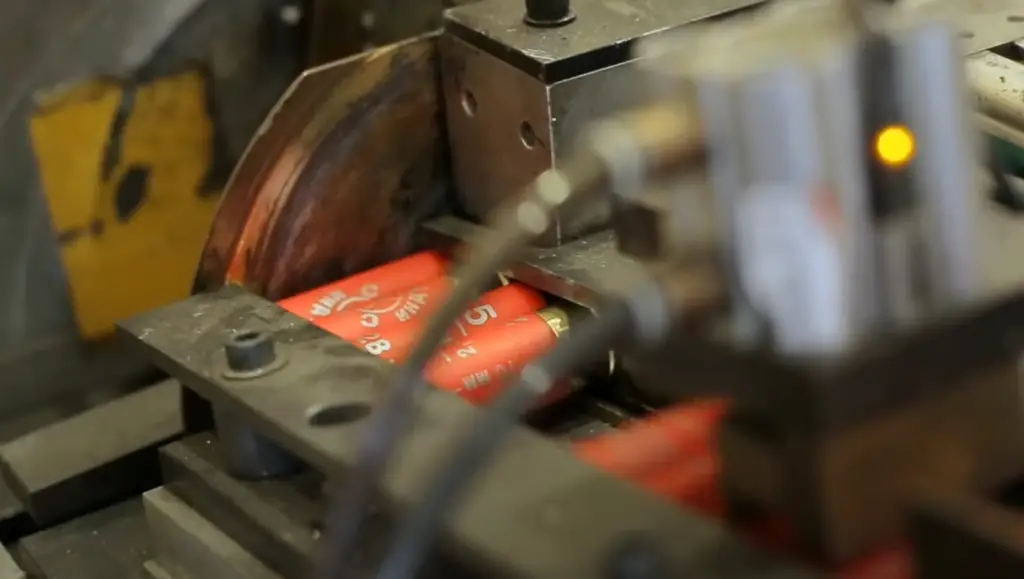
Who Certifies Intrinsically Safe?
Intrinsically safe equipment is certified according to rigorous standards and regulations set by various governing bodies around the world. In the United States, these standards are set by the National Fire Protection Association (NFPA) and Occupational Safety and Health Administration (OSHA). The International Electrotechnical Commission (IEC) also sets international standards for intrinsically safe equipment. Each body has its own specific requirements that manufacturers must adhere to in order to be certified as intrinsically safe [6].
For example, NFPA requires all intrinsically safe equipment used in hazardous environments:
- to have a self-contained power source such as batteries or robust electronic protection systems;
- must be limited in voltage and current capacity;
- must not create sparks or produce arcs;
- must remain cool to the touch even when operating;
- must have a protective barrier that prevents the hazardous atmosphere from entering the equipment;
In order for intrinsically safe equipment to be approved by NFPA, OSHA, or IEC standards, manufacturers must provide proof of compliance in the form of certification documentation. This certification is often provided by accredited testing laboratories such as Underwriter Laboratories (UL). UL tests each piece of equipment for safety hazards according to international standards, ensuring it meets all requirements.
How to Identify Intrinsically Safe Certified Radios?
Intrinsically safe equipment is designed to be used in hazardous environments and reduce the risks posed by explosions and fires. One of the most important pieces of intrinsically safe equipment is a certified radio, which can help keep workers in these dangerous areas connected and informed.
Identifying whether or not a radio is intrinsically safe certified can be difficult without the right information.
The following steps should help individuals accurately determine if a specific model meets the necessary requirements:
- Examine the product’s labeling for any mention of an intrinsic safety rating from nationally recognized testing laboratories, such as Underwriters Laboratories (UL). This rating should include markings indicating that it has been approved for use in hazardous zones;
- Check to see if the radio meets certain standards for hazardous areas. This includes requirements like self-contained power sources and circuit design that does not generate sparks or heat that might ignite an explosive atmosphere;
- Confirm that the product has been tested to meet a particular level of performance in relation to safety. For example, intrinsically safe radios must be able to maintain communication with other devices during a fire or explosion;
- Look for additional certification from organizations such as National Fire Protection Association (NFPA). This ensures that the radio is compliant with all current safety regulations in your area of operation [7];
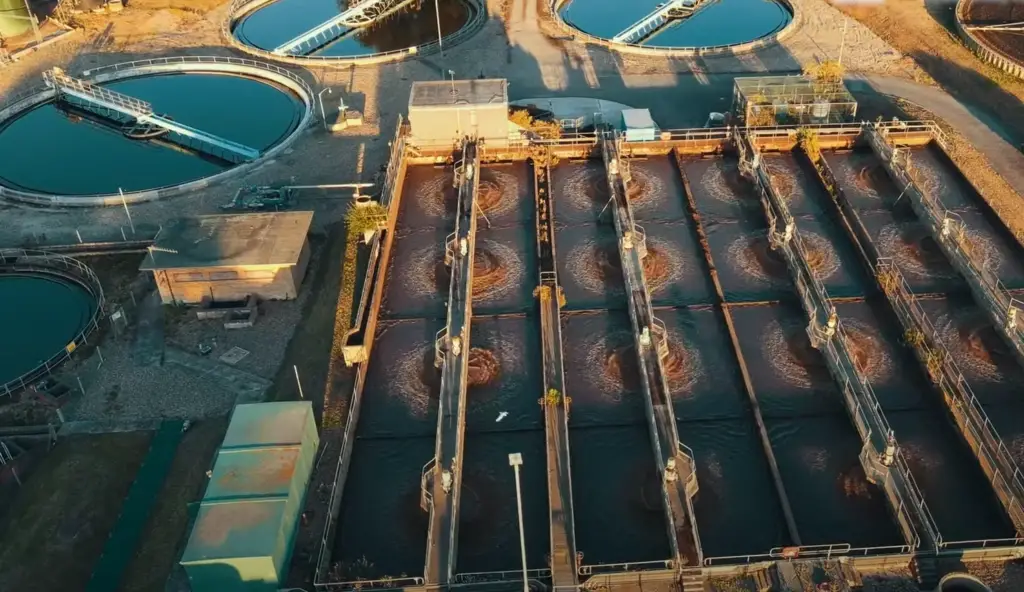
Intrinsically Safe Vs. Explosion-Proof
Intrinsically safe equipment and explosion-proof equipment are commonly confused. While they both provide protection in hazardous environments, their means of protection differ. Intrinsically safe equipment is designed to limit the energy, heat, and sparks that can be generated by electrical components so that it does not ignite a nearby flammable atmosphere.
Explosion-proof equipment uses a combination of design features and materials to contain an internal explosion within the enclosure, preventing its release into the surrounding environment. Both techniques offer protection from dangerous explosions but their applications may differ depending on the risk involved.
How Does Intrinsic Safety Equipment Work?
Intrinsically safe equipment is designed to reduce the risk of fire or explosion in hazardous environments. This is done by limiting the amount of electrical and thermal energy available for ignition within a certain area. In intrinsically safe systems, components must be designed to operate at very low temperatures and voltages so that sparks are less likely to occur and any existing sparks are not powerful enough to ignite flammable materials present.
Components used must meet rigorous safety standards such as those set by IEC/CENELEC, which ensures that only certified items can be used in an intrinsically safe system.
These components often include specialized fuses, circuit breakers, cables with special insulation, spark-proof connectors, and other safety features. When designed properly, an intrinsically safe system is able to provide a secure environment for personnel and equipment in hazardous areas.
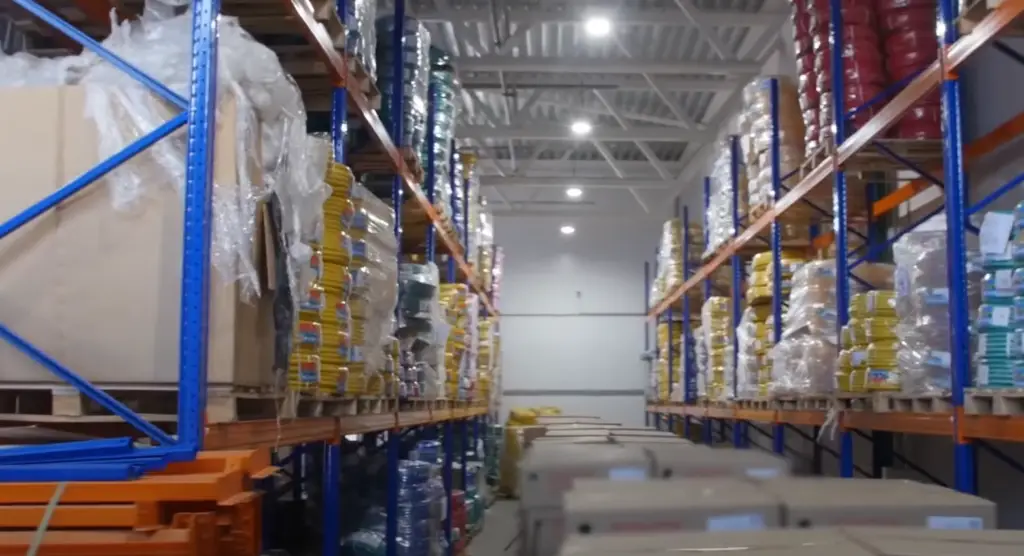
Is Intrinsic Safety Certified Equipment More Expensive Than Non-Certified Versions?
In some cases, intrinsically safe certified equipment may cost more than its non-certified counterparts. This is due to the extra safety features that must be added in order to meet certification requirements. In addition, components may need to be sourced from specialized suppliers which can also add to costs. However, the long-term benefits of using certified equipment often outweigh the upfront cost as it ensures personnel and property are better protected in hazardous environments.
Most organizations, therefore, make sure their employees have access to the highest quality safety equipment available. It is also worth noting that some manufacturers offer reduced prices on intrinsically safe certified versions of their products so it pays to shop around when making a purchase.
Choosing Pressure Transducers or Load Cells for Intrinsic Safety Environments
When it comes to selecting pressure transducers or load cells for such an environment, there are certain factors you must consider.
Pressure transducers and load cells that are designed for intrinsic safety conform to certain specifications and standards that guarantee they will not produce sparks when operating. The best way to ensure that your pressure transducer or load cell is suitable for use in an intrinsically safe environment is by checking its certification rating, which should be clearly specified on the device itself [8].
Additionally, check if the manufacturer has certified the device with any of the major agencies like UL, CSA, ATEX, IECEx, or EXNANO. All these certifications are important to guarantee the device can be safely used in an intrinsically safe environment. Finally, make sure you select a pressure transducer or load cell that is rated for the expected operating temperature range and other conditions of the hazardous environment in which it will be used.

Installation and Risk Management Considerations
Intrinsically safe equipment is designed to be installed in hazardous areas and must still meet the requirements of national or local regulations. Before installation, it’s important to assess the risk management considerations that are necessary when installing any type of equipment into a hazardous environment.
Safety measures such as proper inspection of the equipment, conducting periodic maintenance checks, and establishing safety procedures should always be taken when installing intrinsically safe equipment. It’s also recommended that appropriate personnel be trained in the use and operation of this type of equipment prior to its installation. This will ensure that everyone working with or around this type of equipment understands how it operates and how best to use it safely.
Additionally, although intrinsically safe equipment should provide reliable operation even under hazardous conditions, it’s important to have a backup plan in case of any unexpected circumstances. Having an emergency shutoff system or other safety measures in place will help minimize the risk of injury or equipment damage due to an unexpected event.
How To Apply Intrinsically Safe Standards?
When working with hazardous or explosive materials, it is essential to use equipment that has been designed and tested to meet the relevant international intrinsically safe standards. This ensures that any spark or explosion in the area does not cause damage to any of the electronic devices connected within its vicinity.
The most important step when applying intrinsically safe standards is obtaining appropriate certification from a qualified provider or manufacturer. If possible, you should work with an expert in this field who can provide guidance on testing and safety designs for your particular environment. Additionally, you should always ensure all components used for an intrinsically safe system (including batteries, wiring, cables, sensors, and so on) are certified as meeting the relevant standard.
Once all necessary safety measures have been taken and the system has been certified as intrinsically safe, it is important to adhere to safety regulations for storing and using the equipment. This includes following all specified safe operating conditions and keeping up with regular maintenance to ensure the continued reliability of the system. All users must also be well-trained in the proper use of this type of equipment in order to avoid any potential accidents that could occur if mishandled or used incorrectly.

Intrinsically Safe Circuit Examples
Photo-Eye On A Conveyor
Intrinsically safe photo-eyes are commonly used in hazardous locations to detect the presence of objects on a conveyor. These photo-eyes use low-power LED emitters and photo-sensors to detect the presence of objects. The circuitry used in these devices is designed to limit the amount of electrical energy that can be generated, making them safe for use in hazardous locations.
Decreasing The Dust
Intrinsically safe circuits can also be used to reduce the amount of dust in hazardous locations. For example, intrinsically safe fans can be used to circulate air and reduce the accumulation of dust. These fans use low-power motors and are designed to prevent the generation of sparks or other sources of ignition.
Weight Scale Conveyor
Intrinsically safe circuits can also be used in weight scale conveyors. These conveyors are used to measure the weight of materials that are being transported. Intrinsically safe weight scales use low-power load cells and signal conditioning circuitry to measure the weight of the material. These circuits are designed to prevent the generation of electrical energy that could ignite flammable substances.

FAQ
1. How do you make a device intrinsically safe?
To make a device intrinsically safe, specialized components and circuitry are used to limit electrical energy to a level that is incapable of igniting flammable gases, vapors, or dust particles. These components include barriers, isolators, and sensors, which restrict the flow of electricity to levels below the ignition point of the hazardous material. Designers must ensure that intrinsically safe equipment is tested and certified to meet specific safety standards and regulations for use in hazardous environments.
2. What is intrinsically safe and non-intrinsically safe?
Intrinsically safe equipment is designed to operate in hazardous environments without causing the ignition of flammable gases, vapors, or dust particles. Non-intrinsically safe equipment, on the other hand, has the potential to ignite flammable materials and can be hazardous to use in explosive atmospheres.
3. Does intrinsically safe mean explosion-proof?
No, intrinsically safe does not mean explosion-proof. Explosion-proof equipment is designed to contain any internal explosions that may occur within the device, while intrinsically safe equipment is designed to limit electrical energy to a level that is incapable of causing the ignition of flammable substances.
4. How do you know if a tool is intrinsically safe?
To know if a tool is intrinsically safe, it must be tested and certified to meet specific safety standards and regulations for use in hazardous environments. The certification process involves testing the equipment under various conditions to ensure that it meets the necessary safety requirements.
5. Is intrinsically safe the same as ATEX?
No, intrinsically safe is not the same as ATEX. ATEX refers to a set of European Union (EU) directives that define the requirements for equipment used in potentially explosive atmospheres.
6. What is the IEC standard for intrinsically safe?
The IEC standard for intrinsically safe equipment is IEC 60079. This standard defines the requirements for electrical equipment that is intended to be used in explosive atmospheres, including intrinsically safe equipment.
7. What voltage is intrinsically safe equipment?
Intrinsically safe equipment operates at low voltage levels, typically below 30 volts, to ensure that electrical energy is limited to a level that is incapable of igniting flammable substances [10].
8. What is a non-intrinsically safe device?
A non-intrinsically safe device is any electrical or electronic equipment that has the potential to ignite flammable substances and is not designed to operate in hazardous environments.
9. What class is intrinsically safe?
Intrinsically safe equipment is classified as Class I, Division 1, or Class I, Division 2, depending on the nature and level of the hazardous material present in the environment.
10. Who certifies intrinsically safe?
Intrinsically safe equipment is certified by independent testing organizations, such as Underwriters Laboratories (UL), Canadian Standards Association (CSA), or Factory Mutual (FM), to ensure that it meets specific safety standards and regulations for use in hazardous environments.
11. What is the difference between intrinsically safe and hazardous locations?
Intrinsically safe equipment is designed to operate in hazardous locations without causing ignition of flammable substances, while hazardous location equipment is designed to contain any explosions that may occur within the device.
12. What color code is intrinsically safe?
Intrinsically safe equipment is typically color-coded blue to indicate that it is safe for use in hazardous environments.
13. What is the code for intrinsically safe?
There are various codes and standards that apply to intrinsically safe equipment, depending on the region and industry. In the United States, the National Electric Code (NEC) Article 504 and Article 505 provide guidelines for the installation and use of intrinsically safe equipment in hazardous locations. In Europe, the ATEX directives provide the regulatory framework for intrinsically safe equipment.
Other codes and standards that may apply to intrinsically safe equipment include the International Electrotechnical Commission (IEC) 60079 series and the International Organization for Standardization (ISO) 80079 series. Compliance with these codes and standards is essential to ensure that intrinsically safe equipment is safe and effective for use in hazardous environments.
14. How do you know if a light is intrinsically safe?
To know if a light is intrinsically safe, you should check the light’s certification label or documentation. Intrinsically safe lights are certified to be safe for use in hazardous locations by organizations such as Underwriters Laboratories (UL) or the International Electrotechnical Commission (IEC). The certification label or documentation should indicate that the light is intrinsically safe and provide information on the hazardous location classification for which it is rated [11].
15. Are lithium batteries intrinsically safe?
Lithium batteries are not inherently intrinsically safe, but they can be designed and manufactured to be intrinsically safe. Intrinsically safe lithium batteries are designed with safety features such as internal circuits that prevent overcharging and over-discharging, as well as protection against short circuits and thermal runaways. These safety features ensure that the battery does not generate heat or sparks that could ignite flammable substances in hazardous environments.
16. Is a multimeter intrinsically safe?
Multimeters can be designed to be intrinsically safe, but not all multimeters are intrinsically safe. Intrinsically safe multimeters are designed with components and features that prevent the generation of sparks or heat that could ignite flammable gases or dust in hazardous locations. These features may include encapsulation of internal components, voltage and current limiting circuits, and temperature monitoring.
17. What does an intrinsically safe battery mean?
Intrinsically safe batteries are designed with safety features such as internal circuits that prevent overcharging and over-discharging, as well as protection against short circuits and thermal runaways. These safety features ensure that the battery does not generate heat or sparks that could ignite flammable substances in hazardous environments.
18. Are digital cameras intrinsically safe?
Digital cameras can be designed to be intrinsically safe, but not all digital cameras are intrinsically safe. Intrinsically safe digital cameras are designed with components and features that prevent the generation of sparks or heat that could ignite flammable gases or dust in hazardous locations. These features may include encapsulation of internal components, voltage and current limiting circuits, and temperature monitoring.
19. Is an iPhone 10 intrinsically safe?
The iPhone 10 is not intrinsically safe. It is not designed or certified for use in hazardous locations. However, some companies offer cases or enclosures that can make iPhones intrinsically safe for use in hazardous locations.
20. What makes electronics intrinsically safe?
Electronics can be made intrinsically safe by designing them with components and features that prevent the generation of sparks or heat that could ignite flammable gases or dust in hazardous locations. These features may include encapsulation of internal components, voltage and current limiting circuits, and temperature monitoring. Intrinsically safe electronics must also be certified by a recognized testing organization to ensure that they meet the appropriate safety standards for use in hazardous locations.
21. What is the maximum power for intrinsically safe?
The maximum power for intrinsically safe equipment depends on the specific hazardous location classification and the type of equipment. For example, the maximum power for intrinsically safe equipment in Class I, Division 1 location may be different from the maximum power for equipment in a Class II, Division 2 location. The power output for intrinsically safe equipment must be limited to prevent the generation of sparks or heat that could ignite flammable gases or dust.
22. What are the benefits of intrinsically safe equipment?
The benefits of intrinsically safe equipment include increased safety and reduced risk of explosions or fires in hazardous environments. Intrinsically safe equipment is designed to prevent the generation of sparks or heat that could ignite flammable gases or dust in hazardous locations, which reduces the risk of explosions or fires. Intrinsically safe equipment is also designed to be rugged and durable, which makes it suitable for use in harsh and hazardous environments. In addition, intrinsically safe equipment is tested and certified by recognized testing organizations, which provides assurance that it meets the appropriate safety standards for use in hazardous locations.
23. What is the difference between ATEX and UL?
ATEX and UL are two different certification schemes for hazardous location equipment. ATEX is a certification scheme that is used in Europe and is governed by the European Union. UL is a certification scheme that is used in North America and is governed by Underwriters’ Laboratories. Both certification schemes have similar goals, which are to ensure that equipment is safe for use in hazardous locations. However, the certification requirements and testing methods may differ between the two schemes.
24. What is the main purpose of an intrinsically safe barrier?
Intrinsically safe barriers limit the amount of electrical energy that is transmitted to the hazardous location to a level that is too low to ignite flammable gases or dust. This helps to reduce the risk of explosions or fires in hazardous environments.
25. What does intrinsically safe mean by ATEX?
Intrinsically safe ATEX equipment is designed and certified to be safe for use in hazardous environments in Europe. ATEX is a certification scheme that is used in Europe and is governed by the European Union. Intrinsically safe ATEX equipment is designed to be incapable of igniting flammable gases or dust in hazardous locations, which reduces the risk of explosions or fires.
This is achieved by limiting the amount of electrical energy that is transmitted to the hazardous location to a level that is too low to ignite flammable gases or dust. Intrinsically safe ATEX equipment is also designed to be rugged and durable, which makes it suitable for use in harsh and hazardous environments.
26. What is the difference between intrinsic safety and functional safety?
Intrinsic safety and functional safety are two different approaches to ensuring safety in hazardous environments. Intrinsic safety is a method of designing and certifying equipment to be safe for use in hazardous locations by limiting the amount of electrical energy that is transmitted to the hazardous location. Functional safety, on the other hand, is a method of ensuring that a system or process operates safely, even if there is a failure in the system or process.
Functional safety is achieved by implementing safety measures, such as redundancy, to ensure that the system or process continues to operate safely even in the event of failure.
27. Are LED lights intrinsically safe?
LED lights can be intrinsically safe if they are designed and certified to be safe for use in hazardous locations. Intrinsically safe LED lights are designed to limit the amount of electrical energy that is transmitted to the hazardous location to a level that is too low to ignite flammable gases or dust. Intrinsically safe LED lights are also designed to be rugged and durable, which makes them suitable for use in harsh and hazardous environments.
28. What is the difference between IEC and ATEX?
IEC and ATEX are two different certification schemes for hazardous location equipment. IEC is an international certification scheme that is recognized worldwide. ATEX is a certification scheme that is used in Europe and is governed by the European Union. Both certification schemes have similar goals, which are to ensure that equipment is safe for use in hazardous locations. However, the certification requirements and testing methods may differ between the two schemes.
29. Is Class 1 Div 1 intrinsically safe?
Class 1 Div 1 is a hazardous location classification that refers to an area where flammable gases or vapors are present or may be present in sufficient quantities to ignite or explode. Intrinsically safe equipment may be suitable for use in Class 1 Div 1 locations if it is designed and certified to be safe for use in these environments. However, not all Class 1 Div 1 equipment is intrinsically safe. The design and certification of equipment will depend on the specific requirements of the hazardous location and the type of equipment being used.
Useful Video: What is Intrinsically Safe?
References
- https://smartrak.com/what-does-intrinsically-safe-mean
- https://blog.matric.com/intrinsically-safe-electronics
- https://www.omega.co.uk/technical-learning/understanding-what-is-meant-by-intrinsically-safe.html
- https://en.wikipedia.org/wiki/Intrinsic_safety
- https://realpars.com/intrinsically-safe/
- https://intrinsicallysafestore.com/blog/what-is-intrinsically-safe-and-intrinsic-safety-equipment/
- https://blog.taitcommunications.com/2021/07/20/what-is-intrinsically-safe-radio-academy/
- https://blog.pruftechnik.com/intrinsically-safe-vs-explosion-proof/
- https://www.safeopedia.com/definition/568/intrinsic-safety-is
- https://www.wvbandcoms.com/blogs/blog/how-intrinsically-safe-products-improve-firefighter-safety
- https://nomeservices.com.au/intrinsically-safe-equipment/





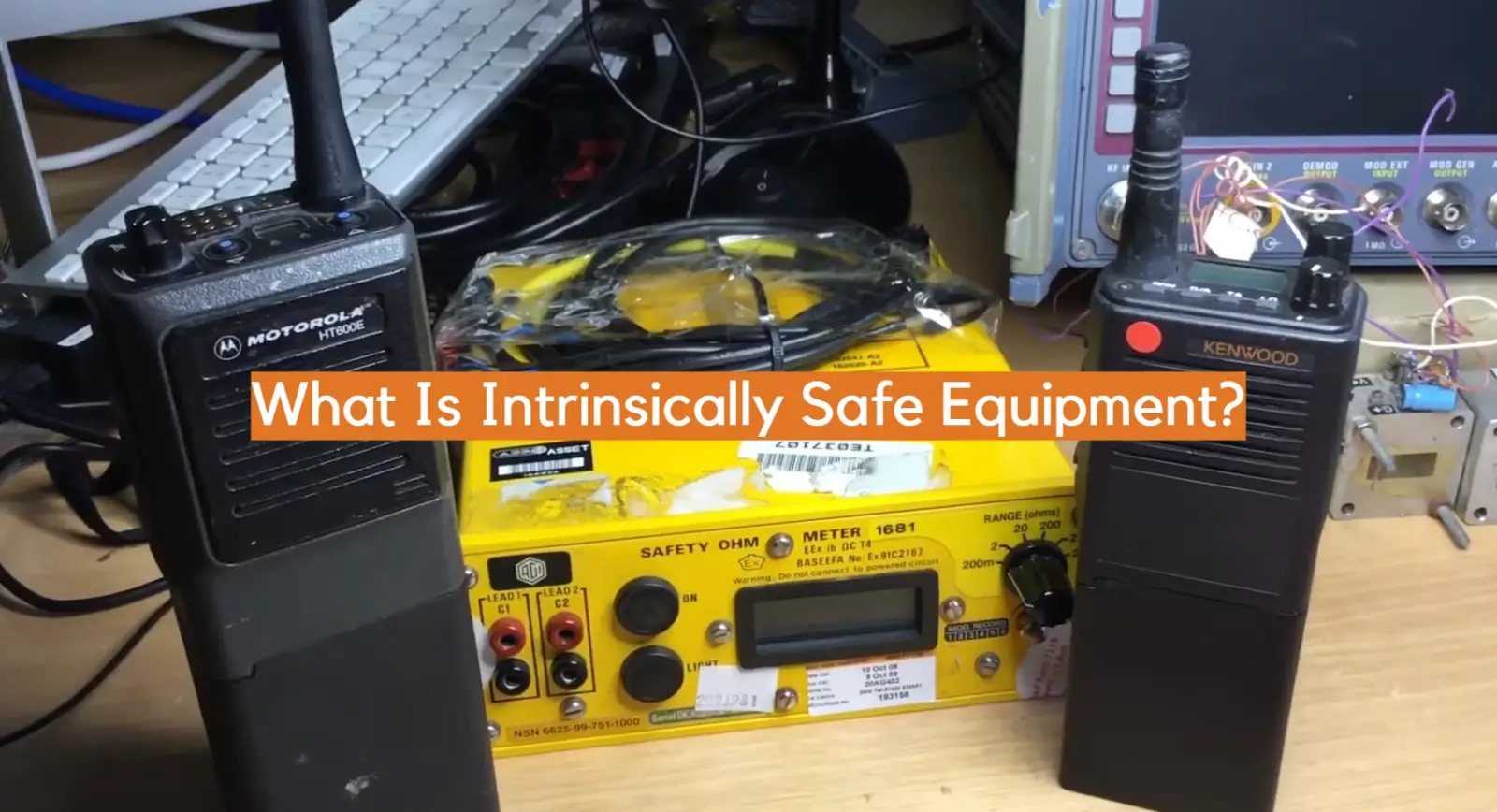








Leave a Reply